Link-building fundamentals: Why are relevant links more important?
Link building is not always about getting links from big publications of note. For a website to earn more trust and visibility, getting the ‘right links’ is more important than just building a multitude of random links.
Each relevant link built to your content is like a ‘vote’ in the eyes of search engines, with each ‘vote’ giving more authority and credibility to your website. Therefore, the more relevant links your site receives the higher it ranks on Google.
If you look at the link profiles of some major competitors in your industry, the majority likely aren’t online publications.
For example, here’s a sample that shows the domains propping up a few of the key competitors of Icelandair.
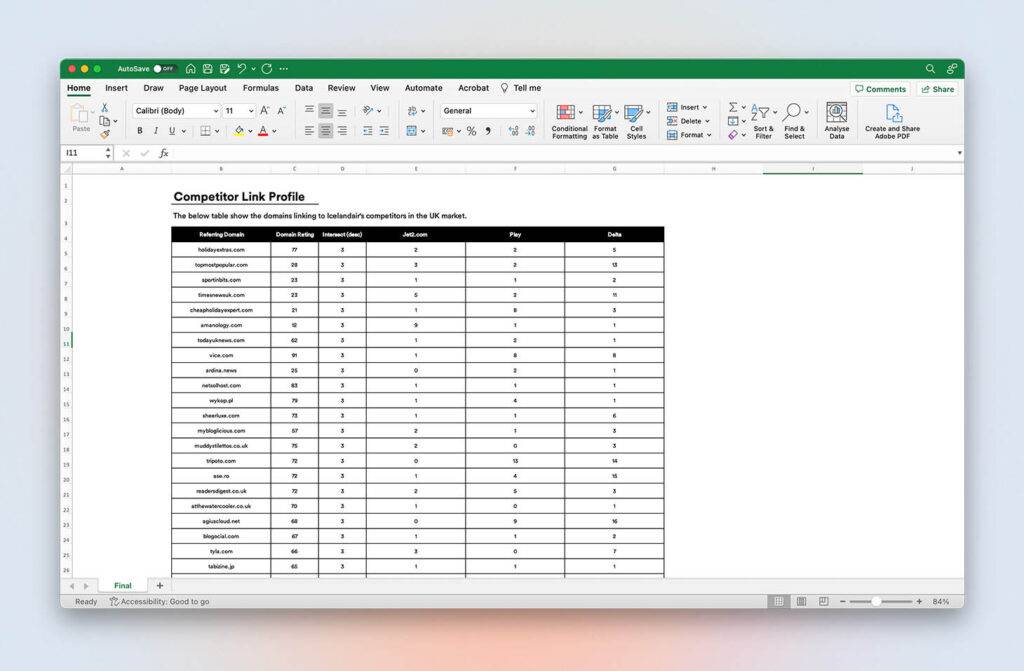
From the above, it is evident that competitor sites not only get links from publications but from a diverse range of websites, from business directories to travel agencies.
If you are planning to invest your precious time in building these valuable links then what assets, if at all, should you have on your website?
What are your assets?
It is not always necessary to have a glossy campaign to outreach for backlinks. Be creative and work with what you already have.
Sometimes you can use your existing content to leverage your backlink profile, or even use your services or products to get backlinks organically.
Below is an example of a global car rental provider securing a backlink from an external guide to Perranporth (TF 35) which mentions car rental options organically.
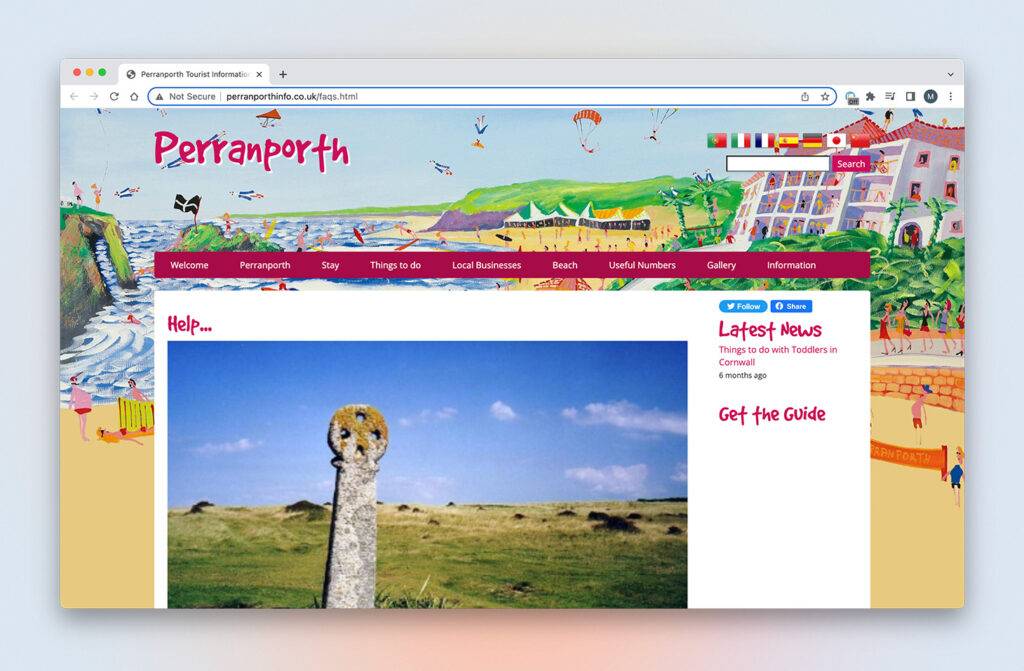
Usually, car hire information on a website like this is like value-added information for their customer to ease their travel needs.
In the example above, the car hire service provider has been added without the need of any shiny content campaigns.
A great place to start is to identify the external sites that share commonality with your product or services. From there, outreach to them to see if your products can enrich their existing information. For instance, if you have a website that sells protein powder, a list of local gym sites that would link back to you would be a great asset.
Now you know what you can do with your existing content, what’s next?
The power of the link intersect
A link intersect compares the backlinks secured by your website against that of your competitors. It aims to provide a clear picture of your link gap – the number of websites linking to your competitor’s sites but not to your sites.
At Builtvisible, the digital PR team has worked closely with our Technical Director, Will Nye, to create an in-house competitor link-intersect tool. This tool allows us to identify domains not linked to your site, but to your competitors, in any market, efficiently and at scale.
When creating a list of domains using the link intersect approach, there will always be a common pool of relevant domains that link to at least two or three of your competitors. In most cases, if a site points to more than one competitor, they are more likely to link to your site.
Here is a recent link intersect sample on linking sites to three competing websites for Icelandair.
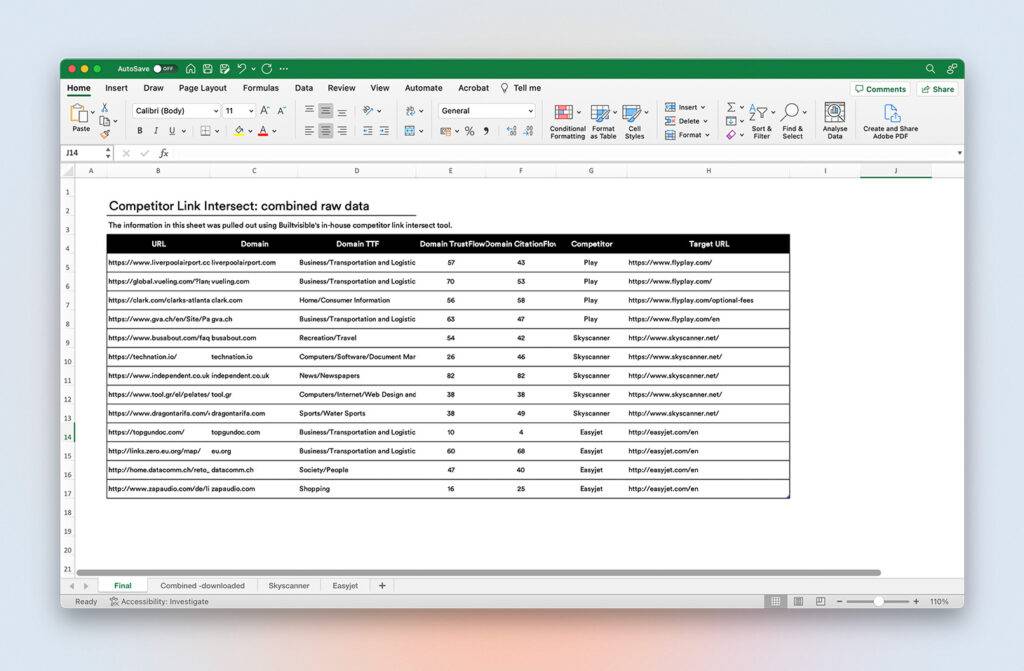
[Domain TTF is a metric derived from the SEO intelligence tool, Majestic, which expands as Tropic Trust Flow. It indicates the category and relevancy of a website.]
The above report shows that there are ample opportunities from regional airport domains to travel information sites for Icelandair.
Generally, the information from the competitor link-intersect report gives us detailed insights into the following questions:
- How many domains are linking to your competitors but not to yours?
- What types of external domains are linking to your competitors?
- Which page from the external domain is linking to your competitors?
- What type of page from your competitors’ sites procures the most links?
- How authoritative and reliable are the external sites linking to your competitors?
Once you’ve identified the sites that are not linking to your website, the next step is to identify their relevance. Choosing the right sites is more crucial than getting sold on all the resulting sites. With the above sample as an example, the Liverpool airport website is not the right site for Icelandair since the airline doesn’t operate in the location (at the time of writing this).
It’s also best to ignore the slightly iffy networks of sites that may not add much value to your website. These sites can be identified as generally overloaded with texts, with its content arranged haphazardly. Another signal (amongst many other tells) that a site may not be trustworthy is looking at the footer to see whether its copyright is up to date.
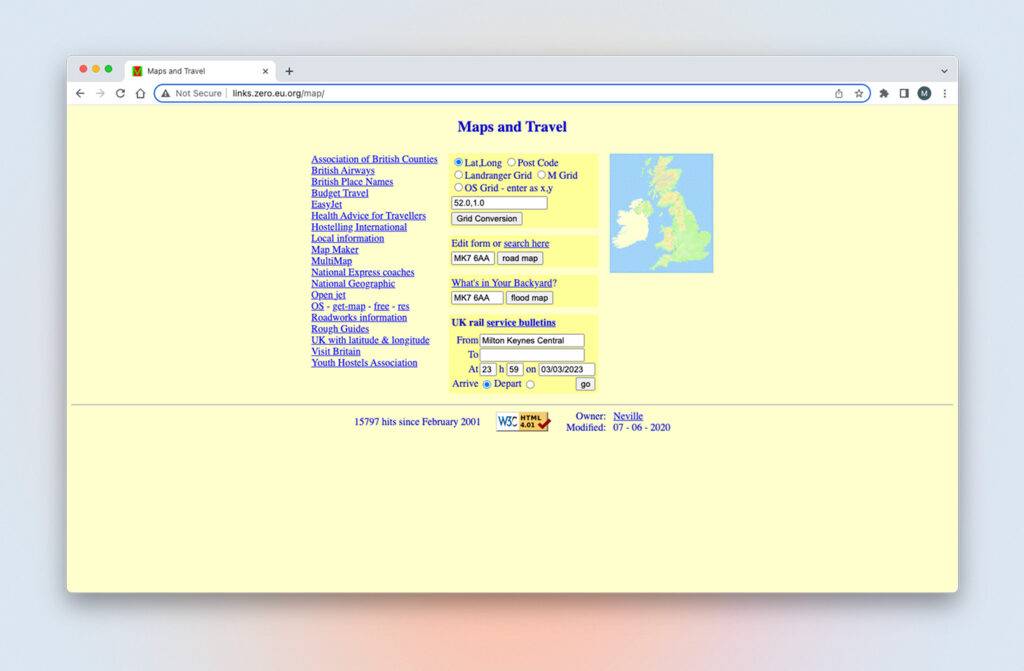
Above is an example of a website that has randomly linked domains. Placing your website on a site like this could lead to a toxic backlink.
Relevancy vs Authority – which is better in link building?
Generally speaking, a website’s credibility is measured by these key factors – Domain Authority and Trust Flow. Domain authority indicates a site’s link popularity compared to other sites, while Trust Flow indicates the level of trust passing through pages across the web. They are measured on a scale of 0 – 100, with 100 denoting a highly influential and authoritative website and zero indicating the exact opposite.
However, let’s discuss the elephant in the room. What’s better? A site with high Trust Flow but a completely irrelevant link, or one with a lower Trust Flow link that’s bang in the middle of the subject field and therefore totally relevant?
The truth is you should consider both.
Imagine getting multiple links from highly authoritative websites, yet their readership doesn’t have even the slightest interest in you, resulting in all your effort being in vain. Our take is to go for the high-value links when you have a good story or asset to promote.
But when you don’t, it doesn’t matter even if a website has a low domain authority as long as it can add value to your website by boosting your page visibility or driving traffic to your site.
Generally, these websites can be of any category ranging from small blogging sites to local community sites to student information sites. There is a shedload of sites like these on the internet, however, the challenge is to find the right ones for your website.
Make use of Google operators to find the relevant sites
To aid in finding a good deal of external sites relevant to your niche, Google operators can come in handy.
Here’s an example of pulling out a list of useful sites for Towergate Insurance (a specialist insurance provider offering a wide range of insurance products) using the Google search operator – ‘inurl’.
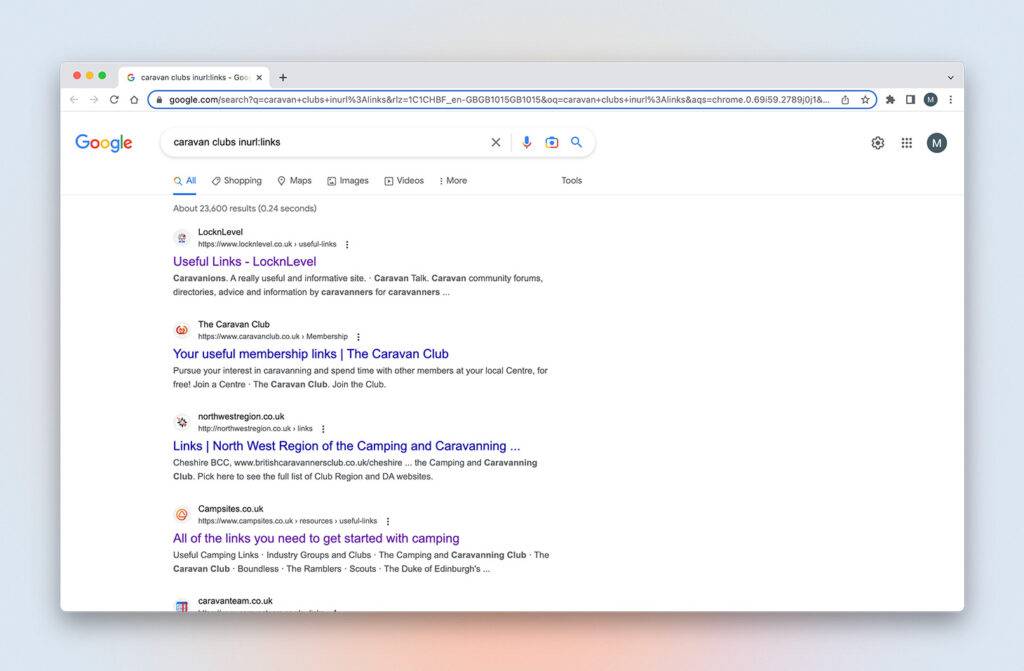
Some of these caravanning club sites have useful links pages that link back to external sites that can add value to their readership. Below are some examples of caravan clubs and information sites that can be potential opportunities for Towergate’s caravan insurance page.
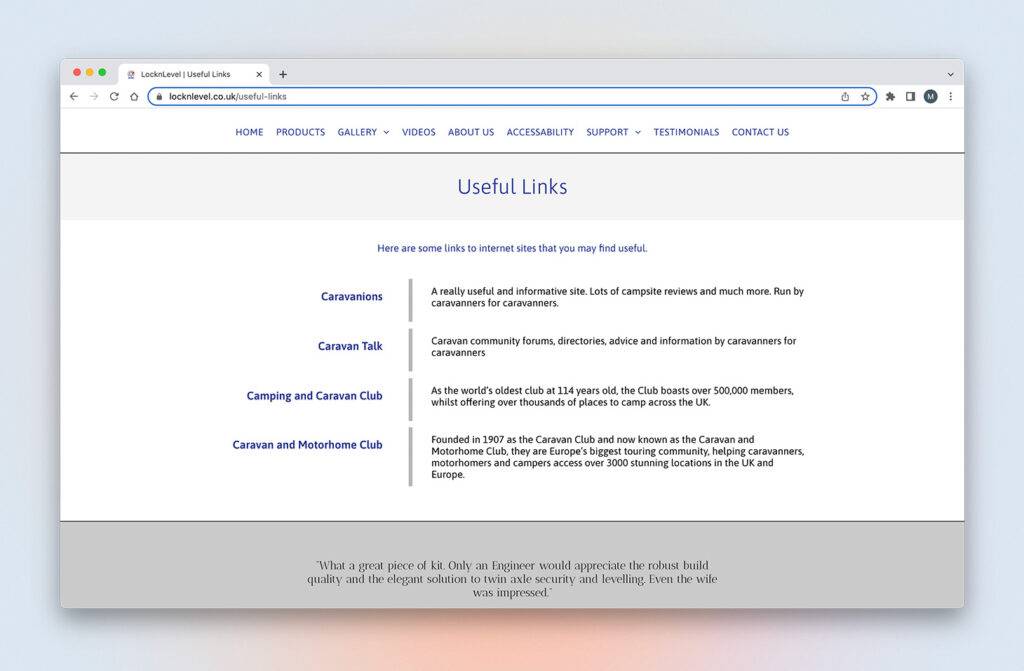
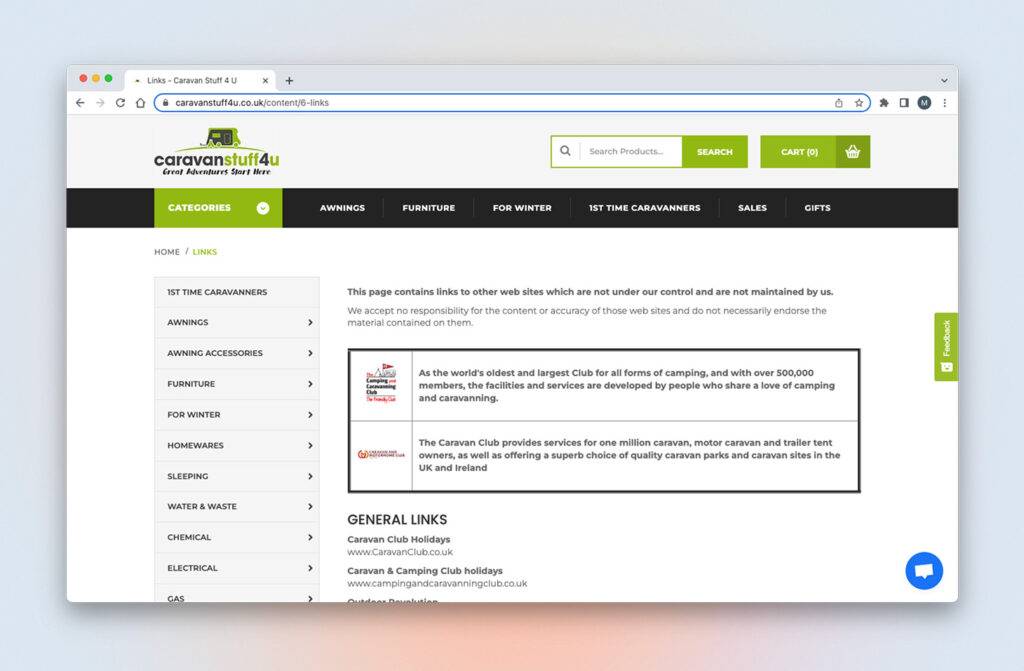
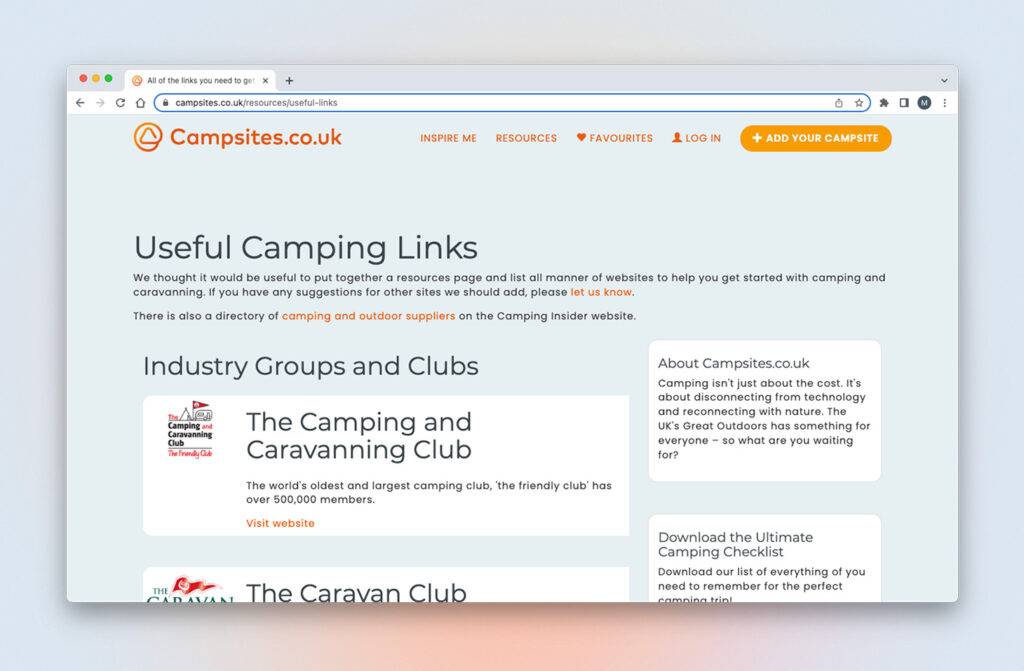
Looking for links and resource pages is a great test for your skills with Google’s operators. It’s easy to find hundreds of sites that you’d want to seriously consider talking to.
These tactics can come in handy in situations where you don’t have fresh shiny campaigns to outreach to fancy high-tier publications. Besides, they’re also the ones to rely on in the long run for successful scalable opportunities.
Now you have identified the list of sites that can leverage your online presence using the aforementioned techniques, what’s next?
Link-building outreach: How to build a good network of contacts
Finding the right website is good, but what’s even better is finding the right contacts. We recommend documenting your findings immediately to avoid missing any potential opportunities. Once you have logged them in, dive right into outreaching to your contacts.
Below is an example prospecting list.
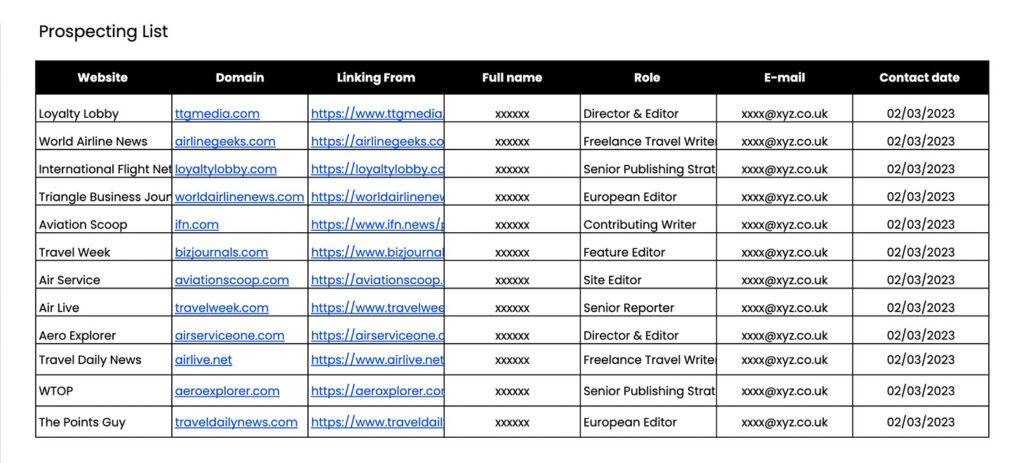
It’s important to update your prospecting list to avoid making any mistakes such as adding unsubscribed contacts or emailing the contacts with the same message multiple times inadvertently.
In many ways, prospecting can be a numbers game, but the key to prospecting relies on three P’s – Positivity, Patience and Persistence.
First, you should accept the fact that it can take a long time to see a tangible result for your website. With that in mind, you should always have a positive mindset and the tenacity to add more relevant sites to your list and outreach to them. Tools such as Roxhill and BuzzStream can go a long way toward prospecting and scheduling your outreach.
We hope the above techniques have offered value to your existing link-building strategy. These link-building techniques can always come in handy when you don’t have enough time or resources to create campaigns from scratch. It is always good to try various approaches and choose what works best for you.
Additionally, the tested tactics of link reclamation and link realignment can come in useful anytime to maximise your link profile.
If you have any questions, let us know in the comments below, or reach out to our Digital PR specialists who have decades worth of link-building experience.
